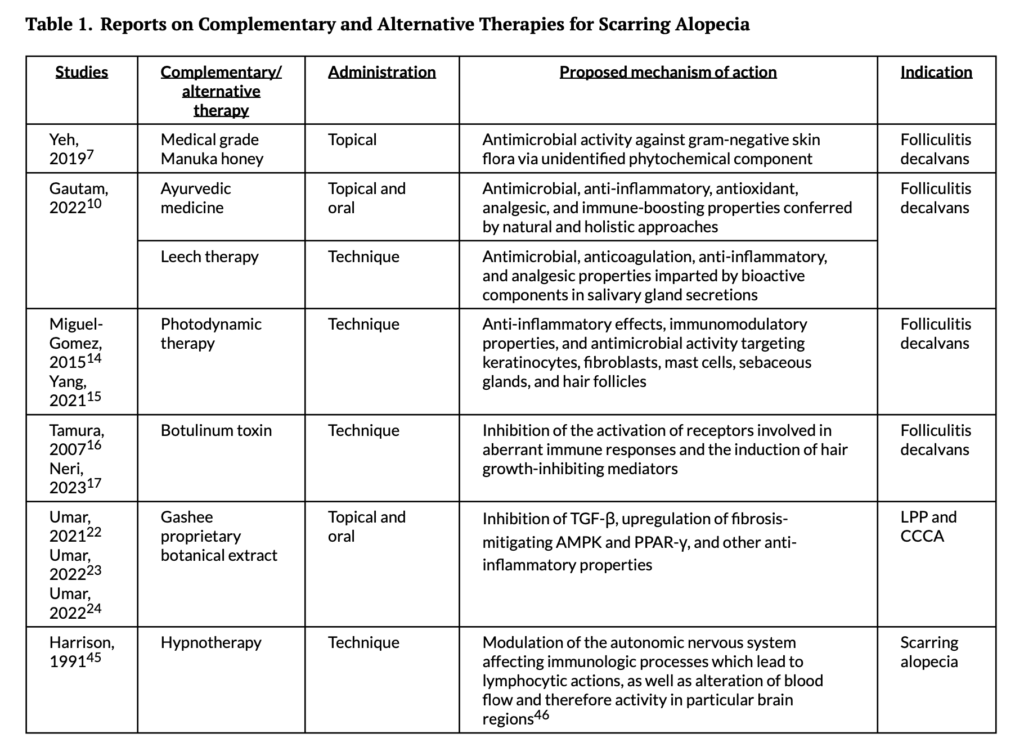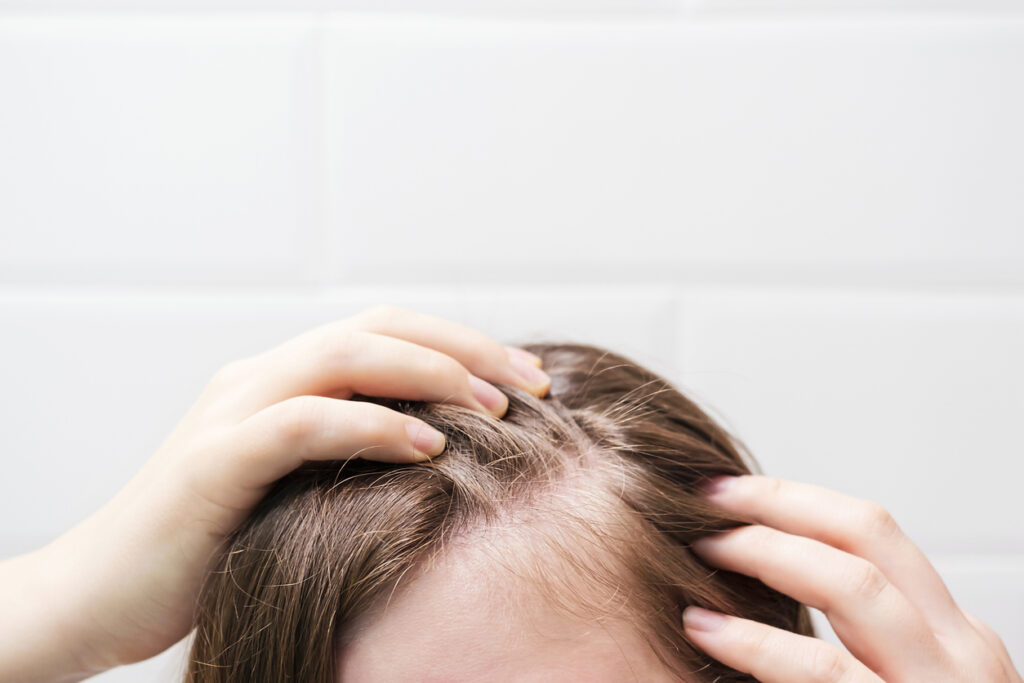There are no U.S. Food and Drug Administration (FDA)-approved therapies for scarring alopecia, and existing treatments are often ineffective, which is why many patients turn to complementary and alternative therapies.
Unfortunately, there is an extremely limited body of evidence on these therapies, including medical-grade Manuka honey, leech therapy, botulinum toxin, plus more.
This is the main takeaway from a new study in the Journal of Integrative Dermatology that set out to evaluate such therapies for scarring alopecia.
For the study, researchers conducted a literature review on alopecia and complementary treatments.
Proposed Mechanism of Action for Complementary and Alternative Therapies in Scarring Alopecia

Here’s a snapshot of the evidence on six complementary and alternative therapies for scarring alopecia.
Medical-grade Manuka Honey
The evidence? One case study.
The upshot? Honey may be a safe and cost-effective adjuvant therapy for folliculitis decalvans, but larger controlled studies are needed.
Ayurvedic Treatment and Medicinal Leech Therapy (Hirudotherapy)
The evidence? One case report of a 24-year-old male with a 4-month history of folliculitis decalvans who achieved complete disease remission after two months of Ayurvedic treatment along with leech therapy.
The upshot? This therapy may be potentially effective, but the patient was also using multiple concurrent topical and oral treatments.
Gashee Botanical Extract
This extract consists of 12 phytoactive ingredients (gotu kola, green tea extract with 95% epigallocatechin gallate, fenugreek oil, Aloe barbadensis extract, red (Asian) ginseng extract, Polygonum Fo-ti extract, cysteine/N-acetyl-cysteine, turmeric, horsetail extract, tall oil fatty acids, saw palmetto, Eclipta alba oil, and vitamin D3).
The evidence? Three case series describe the successful treatment of scarring alopecia with this preparation in lichen planopilaris (LPP) and central centrifugal cicatricial alopecia (CCCA).
The upshot? This proprietary botanical combination may hold promise for treating scarring alopecia. “The role of botanicals in the treatment of scarring alopecia, including optimal dosing, warrants further investigation in larger controlled trials,” the study authors conclude.
Hypnotherapy
The evidence? One study of two patients.
The upshot? “Hypnotherapy may have the potential to improve psychological wellbeing as well as hair loss in patients with scarring alopecia, but larger controlled studies are necessary to corroborate these findings,” the researchers conclude
Botulinum Toxin
The evidence? Two case series, one comprising four male patients and one of a 34-year-old male.
The upshot? Larger controlled studies are needed to increase understanding of the mechanism.
Photodynamic Therapy (PDT)
The evidence? A case series of 10 patients, 5 males and five females (age range: 33-58 years) with a histologic diagnosis of folliculitis decalvans and a series of 13 male patients with a history of folliculitis decalvans who were unresponsive to topical and oral treatments.
The upshot? Noninvasive PDT using topical photosensitizers may be ideal for patients with intolerance or contraindications to systemic therapies generally used to treat folliculitis decalvans. “Further controlled investigations are warranted to determine the efficacy of PDT in the disease,” the researchers write.


